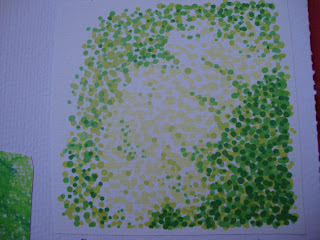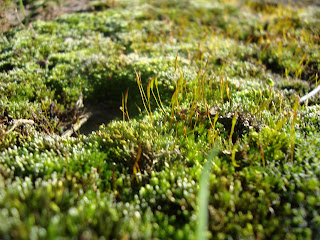Yay! Time to get out the paints and start playing.
I ran through some mixing techniques with different media.
Firstly watercolour -
From the bottom row up, because I put the photo in upside down, pure colour, diluted with water, mixed with black, mixed with white and mixed with grey.
In this one I concentrated on using deep red watercolour ink and exploring all the different shades I could achieve with it. From the top, diluting gradually with water, adding white, adding black, adding grey and then on the bottom row I spaced out for a while and added blue to it, completely forgetting that green is actually reds complimentary colour, Doh!
I moved on to acrylic paint next, again from the bottom up, pure, dilute with water, white paint added, grey paint added, black paint added, complimentary colour added, it was after I painted the first row that I remembered that the compliment to red is green so this one is also in blue, oh dear!
I used deep violet acrylic in this one, again adding water, white, grey, black and then orange as the compliment.
I feel like I'm saying it a lot, but this exercise was a really good reminder for me, it's a long time since I've sat down and really thought about colour and how to create the one I need.


















































